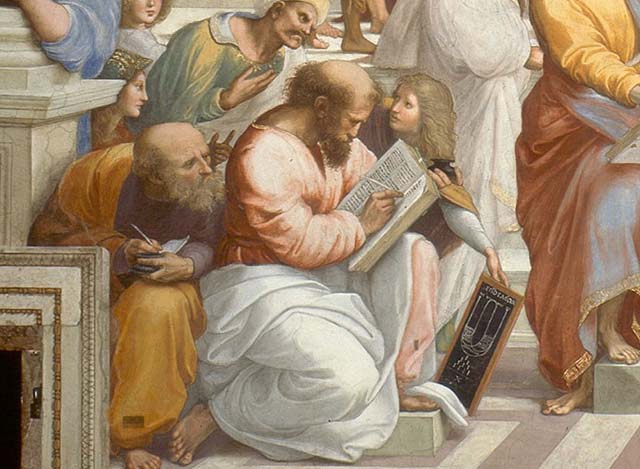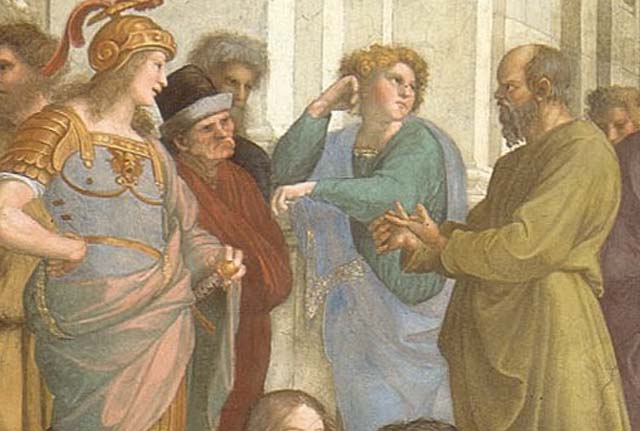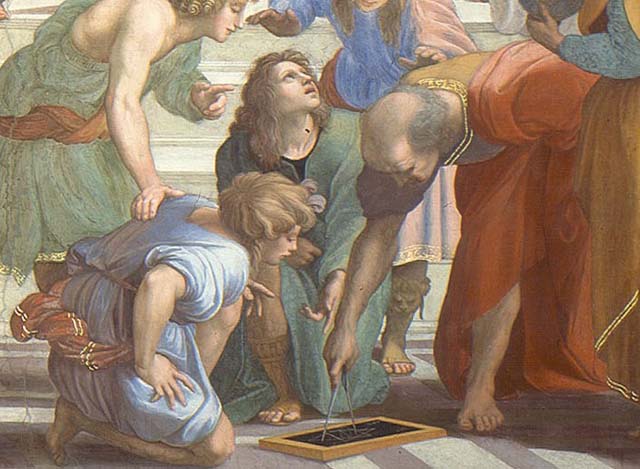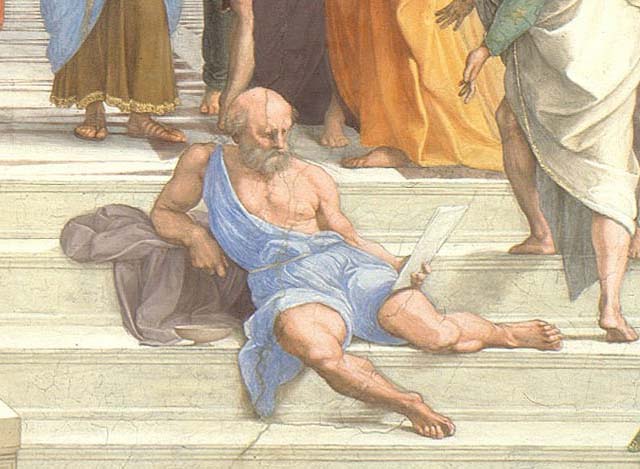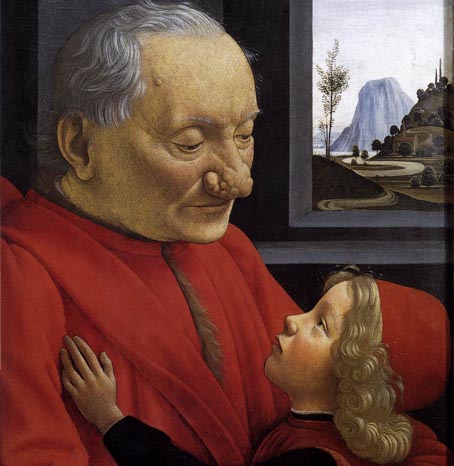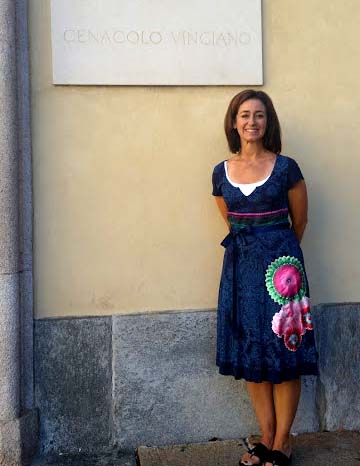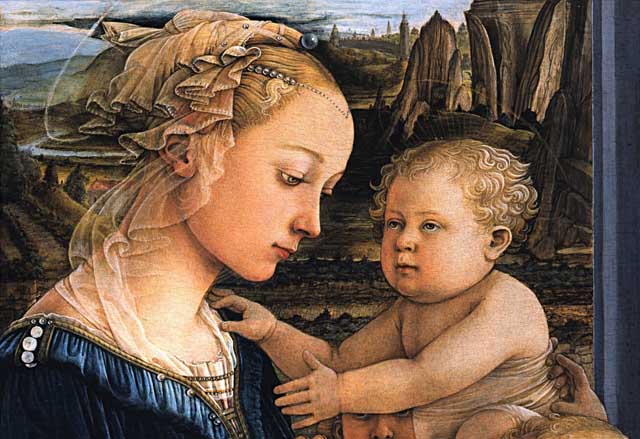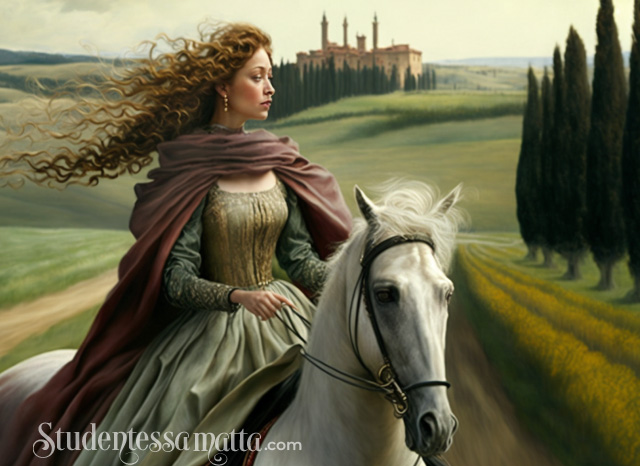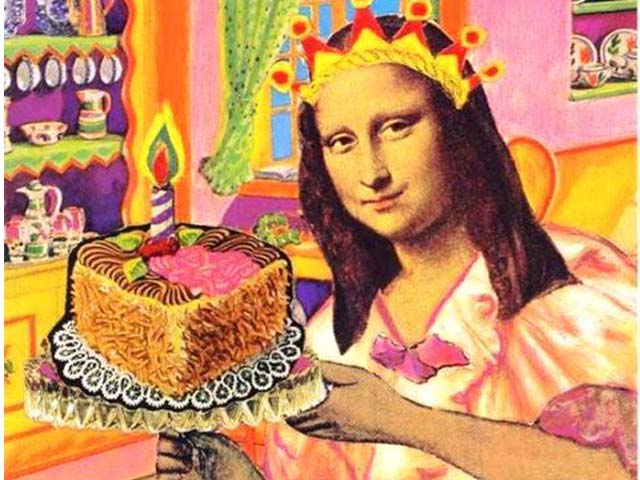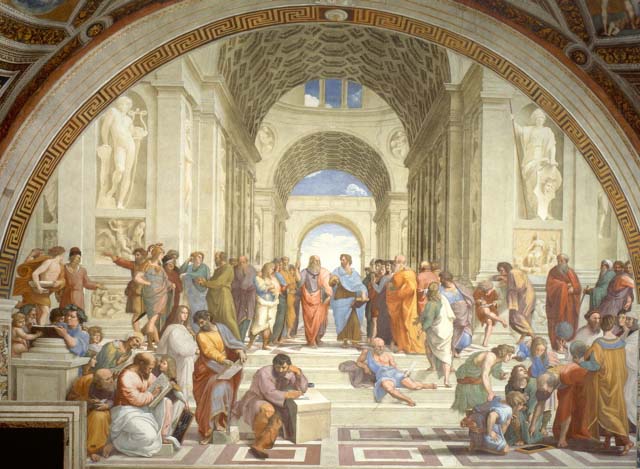
Raphael’s “School of Athens”: Rivalry and Curiosities
Raphael’s Rooms: A Masterpiece in the Heart of the Vatican
If you’ve visited the Vatican Museums and admired the vast collection of art and sculpture, you’ve surely encountered the “Raphael Rooms” on the second floor of the Vatican Palace.
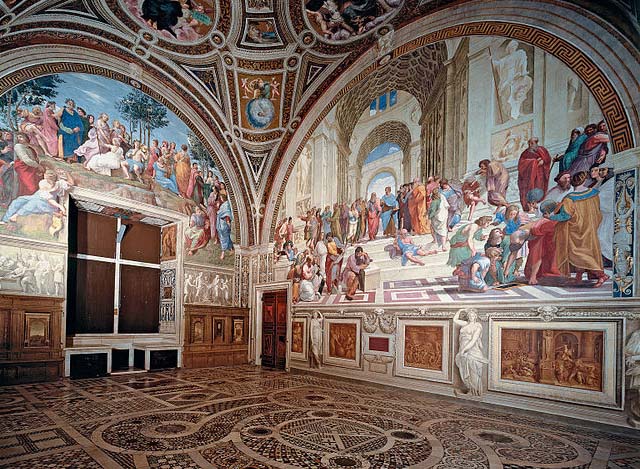
A Pope, Two Geniuses, and the Race for Prestige
Between 1509 and 1511, Raphael Sanzio, the “rock star” painter alongside Leonardo and Michelangelo, was summoned to Rome by Pope Julius II. Known for his artistic and military ambitions, Julius tasked Raphael with decorating his private rooms and Michelangelo with the Sistine Chapel ceiling.
Artistic Rivalry: A Spark for Genius
Perhaps because the two artists didn’t get along, they outdid themselves. Neither wanted to fail, and their rivalry drove them to create extraordinary masterpieces.
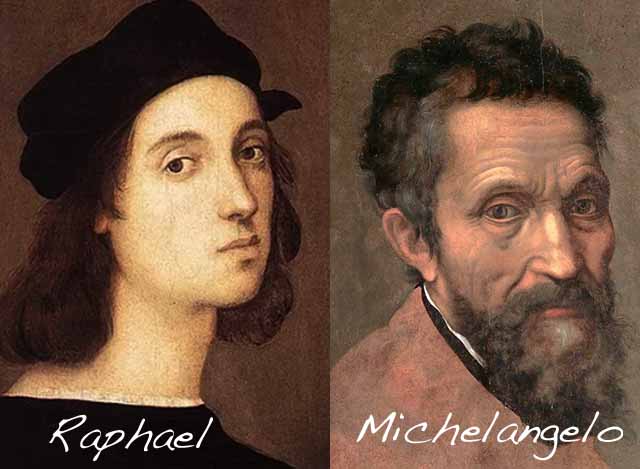
The School of Athens: Philosophers on Stage
Raphael painted The School of Athens in the Stanza della Segnatura, intended to be the Pope’s library. This fresco celebrates the union of art, philosophy, and science, pillars of the Renaissance. At its center are Plato and Aristotle, surrounded by thinkers like Socrates, Pythagoras, and Euclid.
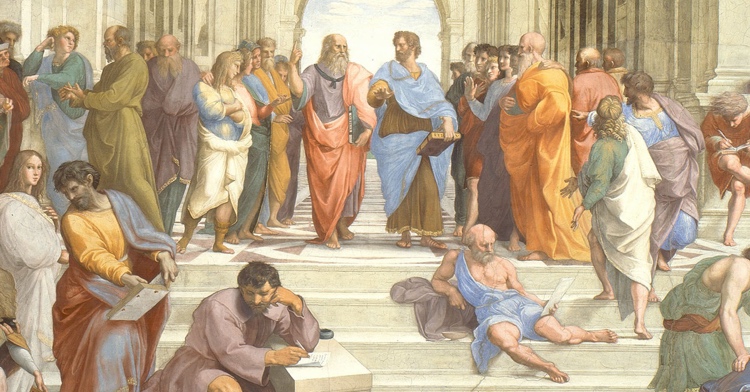
A Hidden Self-Portrait and a Controversial Tribute
Among the figures in The School of Athens, Raphael cleverly included a subtle self-portrait, a playful nod to his own brilliance.
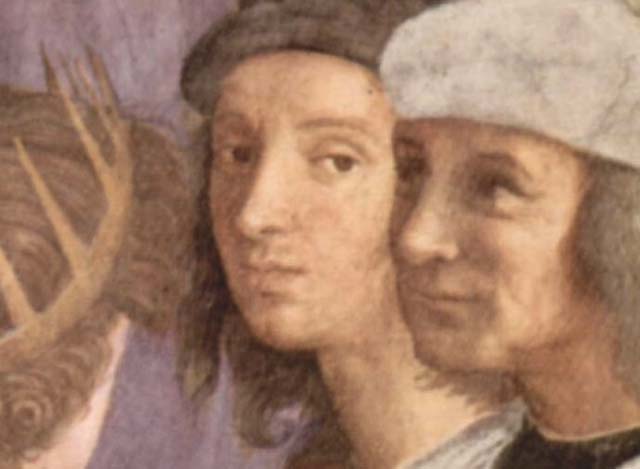
More intriguingly, the solitary figure of the brooding philosopher Heraclitus—depicted deep in thought, isolated from the others—is widely believed to bear the unmistakable features of Michelangelo. Known for his gruff and melancholic nature, Heraclitus renounced his privileged life to retreat into solitude and ponder life’s mysteries. His disdain for humanity earned him the title “The Weeping Philosopher,” as he was seen as a misanthrope who mistrusted and disliked the human species.
Was this resemblance an homage or a cheeky provocation? One can only imagine Michelangelo’s reaction upon seeing himself immortalized as the dour philosopher in Raphael’s grand fresco!
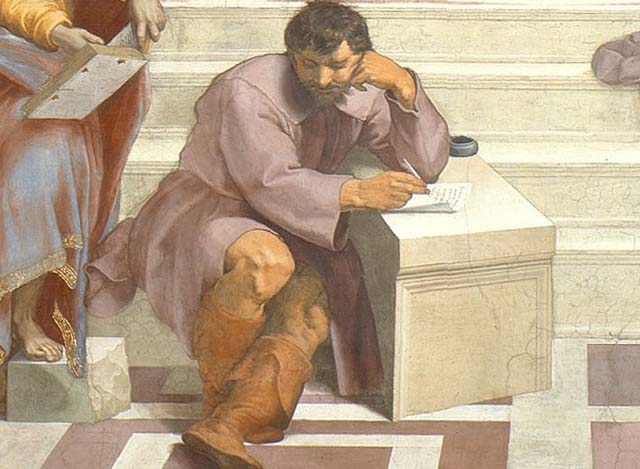
Oh, to have been a fly on the wall when Michelangelo first laid eyes on Raphael’s masterpiece! Did he bristle with indignation? Was his legendary temper ignited? One can only imagine his simmering rage escalating further when an ambassador, dazzled by Raphael’s charm and dashing style (not to mention his position as the Pope’s favorite), mistakenly credited him with decorating the Sistine Chapel. Talk about adding insult to injury!
Raphael’s brilliance was cut short when he tragically died at just 37, while Michelangelo outlived him by decades, reaching the age of 88. Michelangelo not only continued to work in the Vatican but also designed the monumental dome of St. Peter’s Basilica, cementing his legacy as one of history’s greatest artists. Yet, even in his later years, Michelangelo couldn’t resist taking a jab at his former rival. He accused Raphael of plagiarism, claiming that everything the younger artist knew, he had learned from him. In the end, it seems Michelangelo had both the last word and the last brushstroke.
Raphael’s The School of Athens has always fascinated me, so much so that I included it in a scene in my novel The Secret Life of Sofonisba Anguissola. Discover Sofonisba’s reaction to Raphael’s masterpiece and her connection to Michelangelo in my latest book, available on Amazon!
Read the novel that was inspired by the real life adventures of Sofonisba Anguissola!
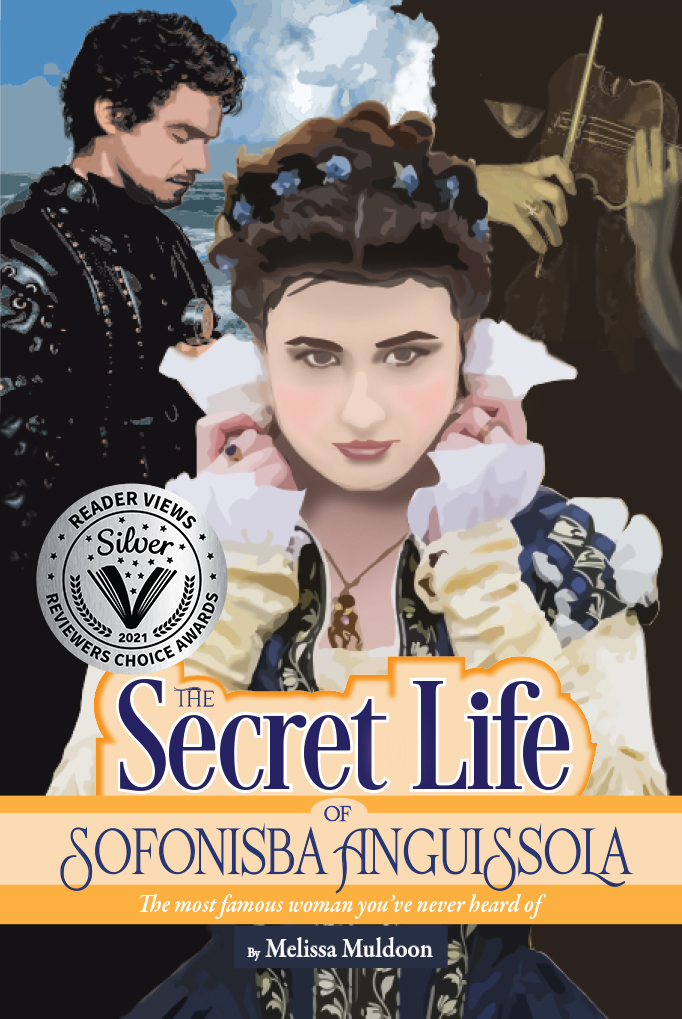
The Secret Life of Sofonisba Anguissola
Set in the sixteenth-century, The Secret Life of Sofonisba Anguissola tells the story of a woman’s passion for painting and adventure. In a world where women painters had little to no acknowledgment, she was singled out by Michelangelo and Vasari who recognized and praised her talent. Gaining the Milanese elite’s acclaim, she went on to become court painter to Spanish King Philip II and taught his queen to paint. One can’t live such an extraordinary life without having stories to tell, and tell them Sofonisba does to Sir Anthony Van Dyke, who comes to visit her toward the end of her life. During their meeting, she agrees to reveal her secrets but first challenges the younger painter to find the one lie hidden in her tale. In a saga filled with intrigue, jealousy, buried treasure, unrequited love, espionage, and murder, Sofonisba’s story is played out against the backdrop of Italy, Spain, and Sicily. Throughout her life, she encounters talented artists, authoritative dukes, mad princes, religious kings, spying queens, vivacious viscounts, and dashing sea captains—even a Barbary pirate. But of all the people who fell in love with Sofonisba, only one captured her heart. The painter may have many secrets but the truth of her life is crystal clear from the beginning. Always a strong, passionate woman with a dream, she was an intelligent artist who knew her self-worth and in the end, as Michelangelo had done for her, Sofonisba passed her brush to a new generation.
